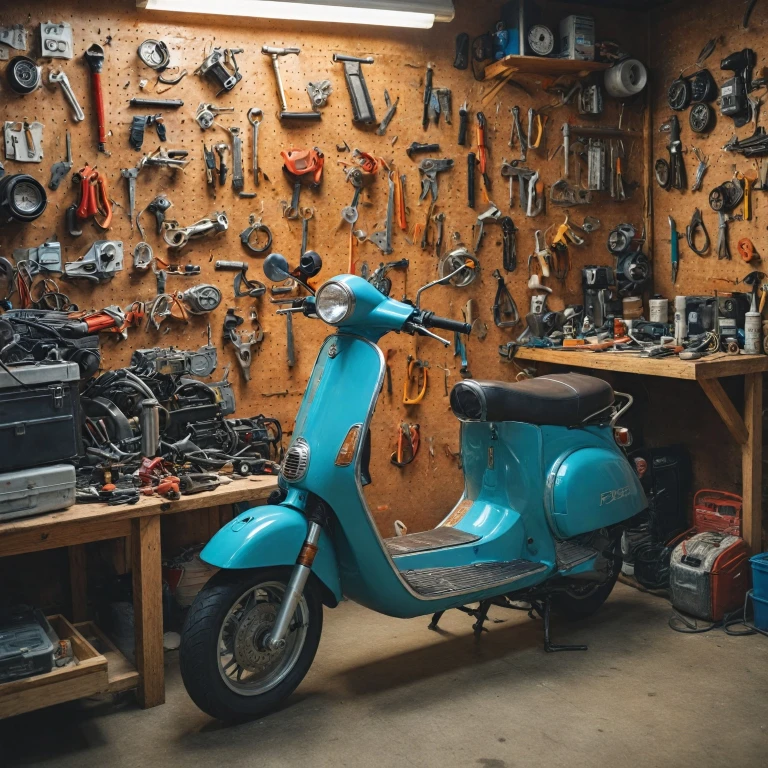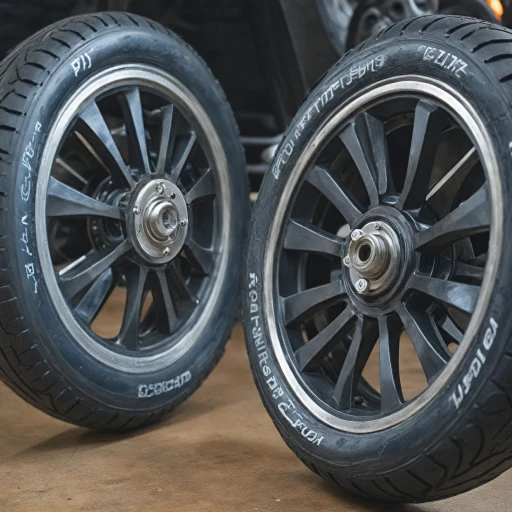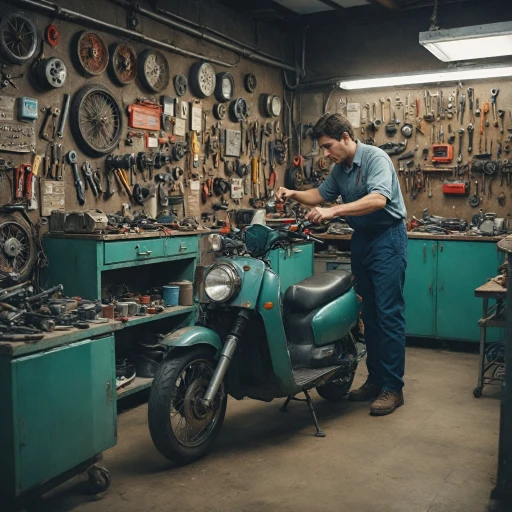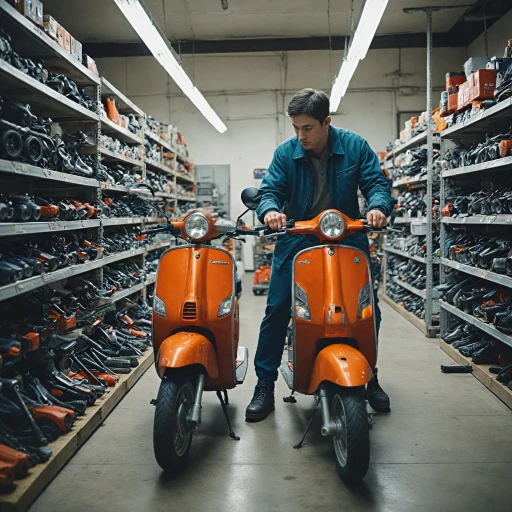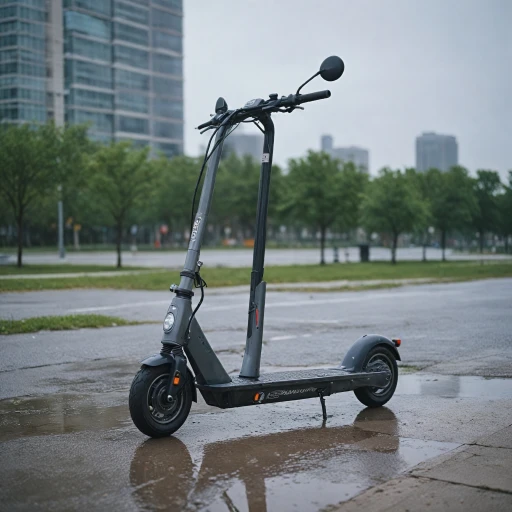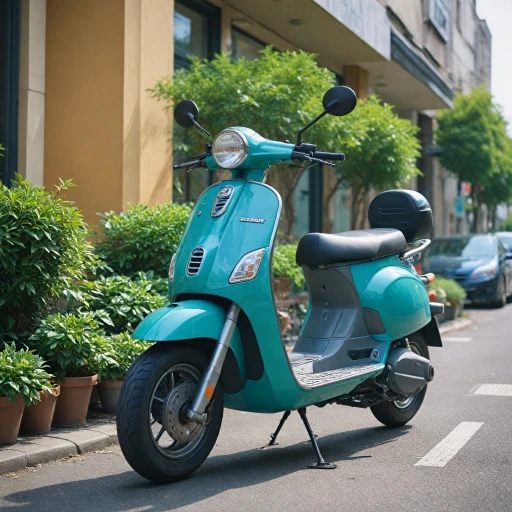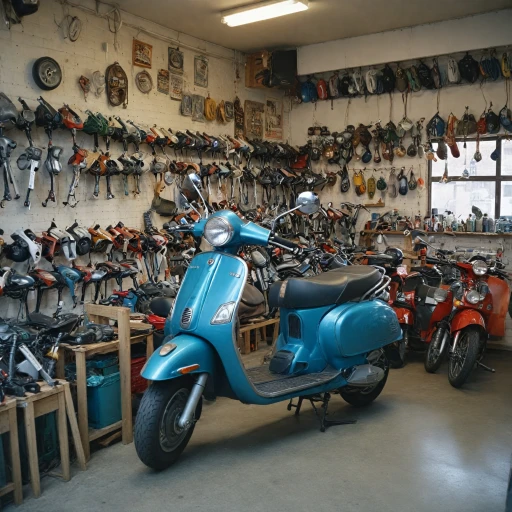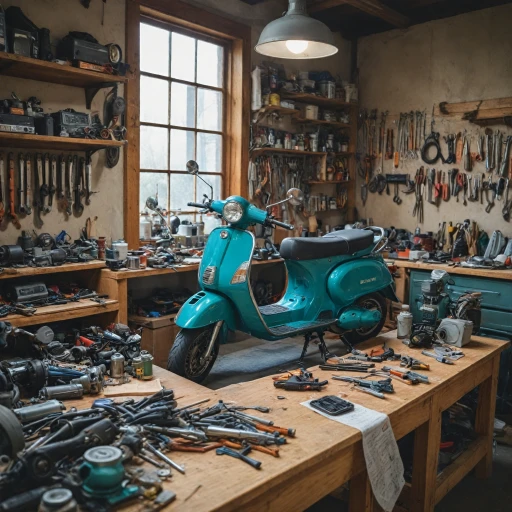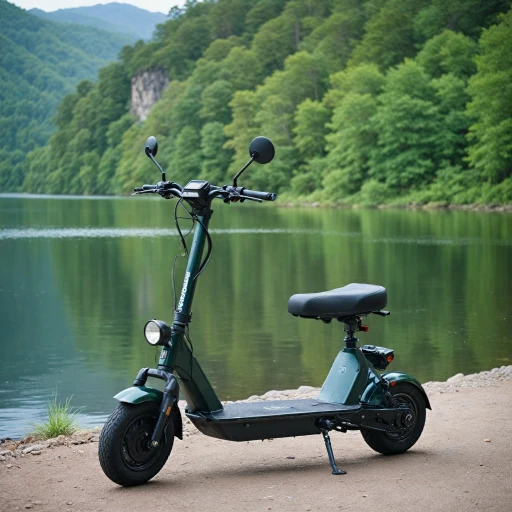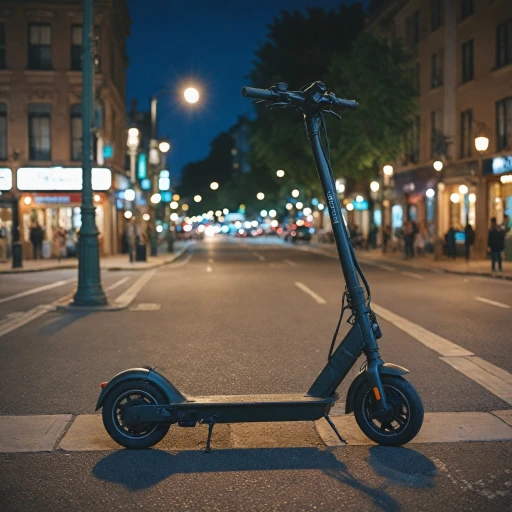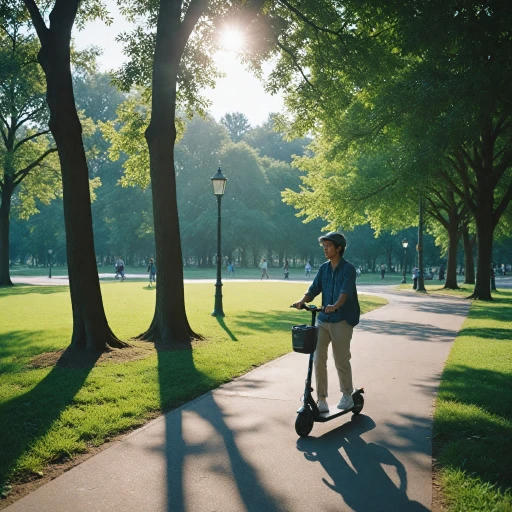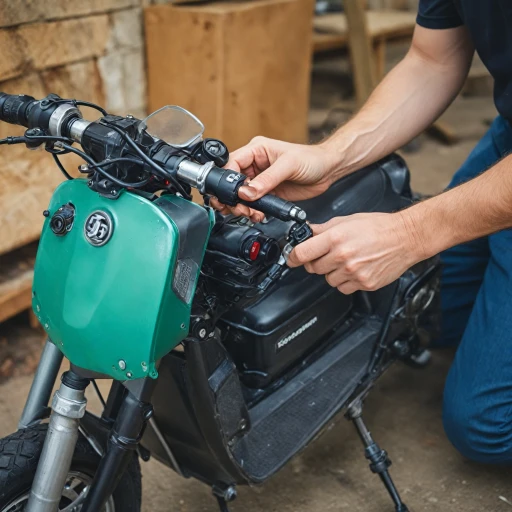
Understanding Common Electric Scooter Problems
Identifying the Main Culprits in Scooter Malfunctions
Electric scooters, while an excellent mode of transport, can face a variety of issues. Understanding these problems is the first step toward effective scooter repair.- Battery Troubles: Batteries are often the source of many problems. If your scooter won't start or loses speed, it’s time to check the battery health. Scooter battery issues often need simple solutions like recharging with a compatible battery charger or replacing the old battery.
- Motor and Electrical System: The motor is at the heart of electric scooters. When the motor runs erratically or doesn’t work, examine the speed controller, motor components, and electrical cables for faults.
- Brake and Tire Problems: Safety shouldn't be compromised. Regular brake checks prevent accidents and tire maintenance ensures optimal grip and speed, usually measured in mph.
Essential Tools for Electric Scooter Repair
Gearing Up for Electric Scooter Repairs
Before diving into any electric scooter repair, it's important to have the right set of tools ready. Whether you're looking to address scooter battery problems or handling the motor concerns, being well-equipped can make the process smoother.
- Basic Toolkit: A screwdriver set, pliers, and a multi-tool are essential for getting under the hood and dealing with smaller repair tasks.
- Multimeter: This is a crucial tool for checking electrical components, such as the battery or speed controller. It helps to diagnose issues efficiently.
- Tire Pressure Gauge: Regularly check the tire pressure for optimal safety and smooth rides, ensuring you have this tool for proper maintenance.
- Battery Charger: To test whether the issue lies with the charger or the battery itself, having the right battery charger compatible with your e-scooter is essential.
- Lubricants and Cleaners: Keep the parts of your scooter in top notch condition with products designed to lubricate and clean.
Having these tools on hand can streamline your repair process and save time. As you gather your materials, consider the various potential issues that can arise, such as motor runs inconsistently or brake problems. Recognizing the signs early can be key to preventing larger malfunctions.
For more complex repair tasks or when you feel out of your depth, it’s wise to explore reliable electric scooter repair services nearby. Turning to trusted professionals ensures your scooter receives the best care possible and helps avoid costly mistakes.
Step-by-Step Guide to Fixing Battery Issues
Fixing Power Problems: A Systematic Approach
When dealing with electric scooters, battery issues rank high among the most common challenges. Addressing these problems carefully can enhance your experience, giving your scooter a new lease on life. Here's a step-by-step guide to help you sort out any battery-related troubles you might encounter.- Verify the Charger Port: One of the first steps in scooter repair is to check your charger port. Make sure there is no debris or corrosion obstructing the connection. If your scooter isn't charging, this could be a simple fix. If needed, clean the port gently using a dry cloth.
- Test the Battery Charger: Before blaming the battery, ensure your battery charger is functioning properly. It’s wise to use a multimeter to check the voltage output of the charger, ensuring it matches the specifications for your electric scooter. You can sometimes overlook this troubleshooting step, leading to unnecessary battery replacements.
- Examine the Scooter Battery: Next, focus on the battery itself. Remove it cautiously and inspect it for signs of wear or damage. Swelling or leaking indicates the need for immediate replacement. Use a voltmeter to check the charge level and compare it against your scooter’s requirements.
- Look Over the Speed Controller: The speed controller acts like the scooter's brain, regulating power from the battery to the motor. If the motor runs inconsistently or the scooter doesn’t start at all, this part might need attention. Look for loose connections or faulty wiring and replace the part if necessary.
- Replace Faulty Parts: Upon diagnosing the problem, acquire the necessary spare parts. Many service centers and online retailers offer a range of components like replacement batteries and chargers tailored for various electric scooters. Be sure you buy from reputable sources to ensure compatibility and quality.
- Testing for Efficiency: After making the repairs, it's crucial to test your scooter under safe conditions. Check that the motor runs smoothly, the bike maintains consistent speed, and that there are no abrupt stops or losses in power.
- Assessing the Charging: To finalize, observe the charging process post-repair. If the scooter and battery charger interact seamlessly, this signals successful repair, paving the way for enhanced safety with electric scooter lighting. Learn more about this critical safety feature.
Troubleshooting Motor and Electrical System Failures
Diagnosing Motor Malfunctions
In the world of electric scooters, motor issues are among the most challenging to diagnose and resolve. The motor is the heart of any scooter, and when it falters, the scooter's performance is noticeably affected. The first step is to listen for any unusual noises or grinding sounds from the motor area.- Check for loose connections or signs of wear on the wiring leading to the motor. Damaged or frayed wires could cause motor malfunctions.
- Examine the speed controller. A faulty speed controller can hinder the motor's efficiency, affecting the overall speed and performance. Proper inspection and possible replacement might be necessary.
Inspecting the Electrical System
An efficient electrical system is crucial for scooters' operation. When issues arise, they often manifest as failure to start, erratic performance, or sudden power loss.- Ensure the main circuit breaker is functioning. A tripped breaker can act as a safety feature but could also indicate underlying problems.
- Inspect the charger port and battery charger to confirm they are delivering the required power to the scooter battery.
- Check if the bike scooter's battery or connections are causing an intermittent power supply. Cleaning and securing batter terminals can be a simple fix.
Managing Overheating Problems
Electric scooter motors may overheat when pushed beyond their limits, often leading to critical damage. If your motor runs hotter than usual, consider these actions:- Ensure you’re not overloading your scooter by exceeding the weight limit. This could strain the motor, causing it to overheat.
- Evaluate the terrain and adjust your riding style. Hills or rough terrain demand more from the motor, increasing the risk of overheating.
- Check the venting around the motor area. Blocked vents can trap heat leading to overheating. Clear any obstructions to allow proper airflow.
Complex Repairs and Seeking Professional Help
While DIY repairs can tackle many common issues, some situations demand professional expertise. Persistent or severe problems with the motor or electric system indicate it's time to approach a repair service.- Identify authorized service centers or repair shops with expertise in electric scooter repairs. Technicians in these centers have access to specialized diagnostics tools and spare parts.
- Choose a reliable repair service with a proven track record in handling complex motor and electrical issues to ensure your scooter is restored to its optimal performance.
Maintaining Brakes and Tires for Optimal Safety
Regular Brake Checks for Safety
Ensuring your electric scooter's brakes are in top condition is crucial for safety. Regularly check the brake pads for wear and tear. If they appear thin or worn out, it's time to replace them. This simple maintenance task can prevent potential accidents and ensure your scooter stops effectively when needed.
Inspecting Tire Condition
Tires are another critical component of your scooter's safety. Regularly inspect them for any signs of damage, such as punctures or excessive wear. Maintaining the correct tire pressure is essential; under-inflated tires can affect the scooter's speed and handling, while over-inflated tires can lead to blowouts. Refer to your scooter's manual for the recommended tire pressure.
Routine Maintenance Tips
- Check Battery: Ensure your scooter battery is charged and functioning well. Regularly check the battery connections for corrosion or damage.
- Service Intervals: Follow the recommended service intervals provided by the manufacturer. This will help in early detection of potential issues.
- Spare Parts: Keep spare parts handy, such as brake pads and inner tubes, to address minor repairs quickly.
When to Consider Professional Repair Services
If you encounter persistent issues with your scooter's brakes or tires, it might be time to consult a professional repair shop. They can provide a comprehensive check and service to ensure your scooter remains safe and reliable. Remember, some repairs might require specialized tools or expertise that only a repair service can provide.
When to Seek Professional Help
Determining When to Call in the Experts
When attempting to fix electric scooters, it's crucial to understand your limitations and know when to seek professional assistance. Sometimes, despite your best efforts and armed with the right tools, problems with the motor, electrical systems, or even a faulty speed controller may persist. Here are signs that it's time to consult a repair service:- Persistent Battery Issues: If your scooter battery doesn’t charge or hold an adequate charge even after checking connections and using a reliable battery charger, it might be a deeper issue that needs expert intervention.
- Unusual Motor Noises: Grinding or unusual sounds from the motor could indicate internal damage or a requirement for motor runs examination, which is better handled by professionals.
- Complicated Electrical System Failures: Electrical components are intricate; consistent failure in the e-scooter's speed controller or electrical system could necessitate professional troubleshooting.
- Severe Brake or Tire Problems: If your brake is not working efficiently despite performing regular maintenance, or if the tires won't maintain their integrity, it might be time to contact a service center.
- Unavailable Spare Parts: Sometimes the parts you need for your scooter repairs are hard to find or not available to the public. Repair shops often have access to these spare parts and can expedite your repair process.
- Manufacturer Warranty: If your electric scooter is still under warranty, attempting a DIY fix might void it. It's wise to check your warranty’s terms and conditions and utilize the authorized repair services stipulated.
- Extensive Damage Post-Accident: Any significant damage following an accident, especially if associated with the frame or vital parts, is best dealt with by experts to ensure the safety of your scooter.
